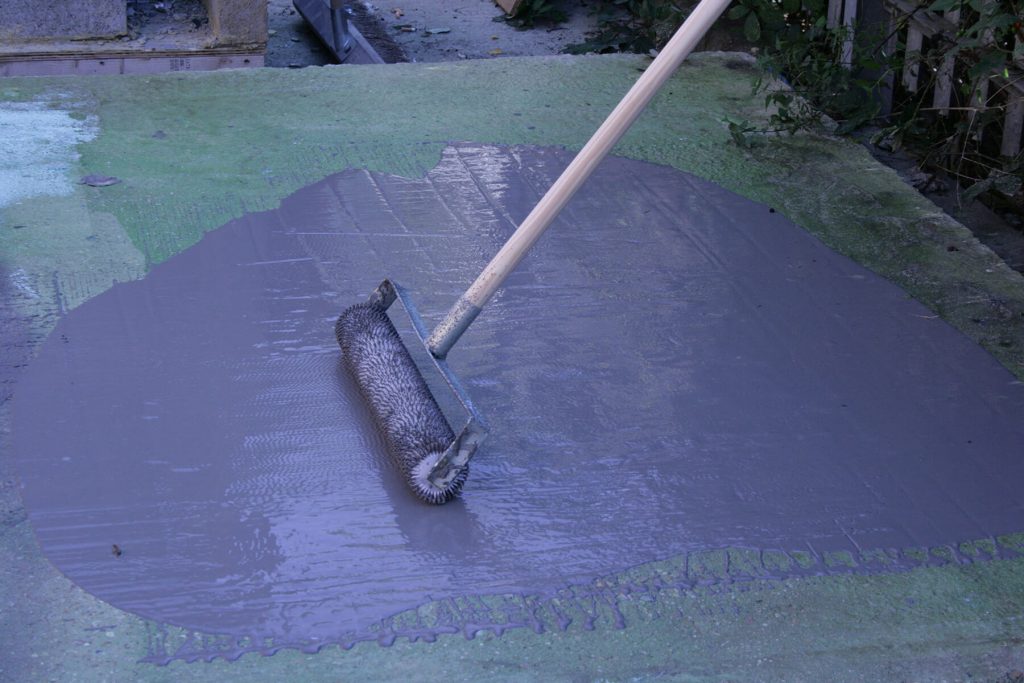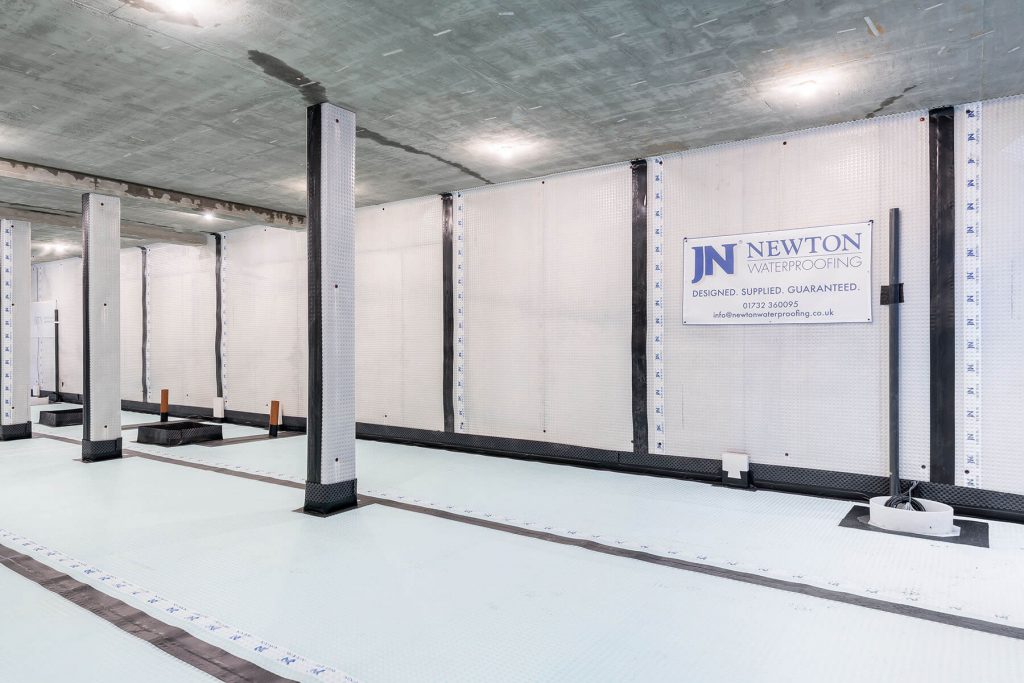01732 360 095
Cementitious waterproofing products stand as one of the most popular methods for protecting structures against water infiltration. With many construction professionals seeking durable and cost-effective waterproofing solutions, understanding the benefits, intricacies and challenges of cementitious waterproofing systems can be crucial for achieving a successful installation.
The Science Behind Cementitious Waterproofing
Cementitious waterproofing systems utilise specially formulated cement-based compounds, often combined with advanced polymers to create a robust barrier against water penetration. When applied correctly to concrete or masonry substrates, these compounds bond with the substrate, creating an impermeable barrier that prevents the passage of water while maintaining structural integrity.
Key Components and Their Functions
- Cement-based materials provide the core waterproofing property of the product, as well as contributing to its durability
- Polymers are used to enhance flexibility and adhesion
- Micro-silica technology can enhance the density and durability
What Makes Cementitious Waterproofing Different from Other Methods?

Unlike pre-applied or post-applied membranes that are applied to the outside of the structure, cementitious waterproofing membranes are generally used inside the structure. In order to be successful, they therefore need to bond to the structure with greater force than the water pressure that they are resisting.
The tremendous bond strength exhibited by these cement-based slurries is what makes them so successful. The cementitious coating creates a continuous barrier inside the structure to form a tank, hence the term ‘tanking’ that is often used to refer to this method of waterproofing.
Mixed as a slurry, cementitious waterproofing coatings are some of the easiest waterproofing materials to apply, whilst ensuring long-term and effective protection to structures such as:
Water-Retaining Structures
- Reservoirs and water tanks
- Sewage treatment plants
- Swimming pools
- Underground vaults
Building Elements
- Basements and foundations
- Podium decks
- Balconies and terraces
- Flat roofs
Industrial Applications
- Chemical storage areas
- Processing facilities
- Areas exposed to seawater
- High-traffic zones
Best Practices for Application
Despite the potential benefits of cementitious waterproofing products, even the most advanced product will not deliver an effective barrier to water if it is applied incorrectly.
Preparation:
Proper surface preparation forms the foundation of successful cementitious waterproofing. Before application, it’s essential to thoroughly assess and prepare the substrate. This involves ensuring all surfaces are clean and structurally sound, with special attention paid to removing any free lime and loose materials that could compromise adhesion. Any existing structural defects must also be addressed and repaired before proceeding.
Wetting and Priming:
Once proper preparation is complete, it is also crucial to follow all specific instructions on the wetting of the substrate. For some cementitious waterproofing products this may also involve applying specialist primers. However, in all cases the wetting of the substrate to remove suction and to provide pathways for the slurries to enter the capillary network of the substrate is essential. It is always crucial to follow the manufacturers installation instructions regarding wetting and priming.
Application Method:
Application techniques play a crucial role in achieving optimal results. Depending on the project requirements, location, site conditions, and the qualities of the chosen product, the cementitious coating could be applied using a number of methods, including by roller, brush, pin leveller, squeegee, trowel, or spray equipment. Guidance should again be given by the manufacturer installation instructions.
Thickness:
Throughout the application process, maintaining consistent thickness is vital for ensuring uniform protection across the treated area. Depending on the cementitious waterproofing product, this may mean installing the membrane in one or more coats, each at a uniform thickness. Once the minimum required thickness has been achieved, the product is designed to provide full protection against water, and in some cases against certain ground gases.
Protection and Curing:
Proper attention must be paid to recommended curing times, as this directly affects the performance and durability of the waterproofing system.
Protecting the newly applied coating from premature drying is essential, as this helps achieve optimal curing and ensures the development of the desired waterproofing properties.
Benefits for Different Stakeholders
Architects and specifiers find value in cementitious waterproofing solutions due to their proven performance credentials, which create confidence in the system specification.
The inherent design flexibility allows for creative solutions to complex waterproofing challenges, while compatibility with various substrates ensures versatility across different project types.
Additionally, comprehensive technical support from manufacturers like Newton enables informed decision-making throughout the design and specification process.
For contractors, the benefits of cementitious waterproofing systems are equally compelling. Fast application rates significantly reduce project timelines, while the capability for year-round application provides valuable flexibility in scheduling.
Quality control is simplified through straightforward application procedures and clear performance indicators. These advantages, combined with reduced labour costs due to efficient application methods, make cementitious waterproofing an attractive option for construction professionals.
Advanced Solutions: Newton’s HydroCoat Range

HydroCoat 103 2K
This high-performance, two-component coating offers exceptional resistance to pressure, making it ideal for demanding applications. Its ability to withstand up to 10 bar of positive and negative water pressure, combined with enhanced chemical resistance, makes it perfect for:
- Basements and other earth retaining structures
- Water-retaining structures
Its A2 fire rating also makes it an ideal solution for application scenarios such as concrete balconies, where there is a requirement for both waterproofing and fire protection.

HydroCoat 105 1K
This versatile, single-component slurry incorporates advanced micro silica polymer and fibre technology into a dense coating that resists up to 10 bar of positive and negative water pressure. Mixed with clean water, it provides multiple solutions in one package, as a:
- Waterproof render
- Surface repair product
- Thin-section bonded screed
- Fairing coat, or
- Waterproof mortar
HydroCoat 107 Elastic 2K
The flexibility of this two-component cementitious waterproofing membrane makes it perfect for structures with both masonry and concrete elements, or in scenarios where structural movement is expected. The membrane is also applicable using a spray machine, making it ideal for large-scale applications, where it will deliver efficiency savings, as well as:
- BDA Agrément certification
- Excellent flexibility
- Superior adhesion to concrete and masonry surfaces
- Enhanced protection against carbon dioxide infiltration
Take the Next Step in Waterproofing Excellence
With over 175 years of experience, Newton Waterproofing continues to lead the industry with innovative solutions like the HydroCoat System. Whether you’re working on a new construction project or renovating existing structures, our technical team is ready to help you select and implement the perfect cementitious waterproofing solution for your needs.
Contact Newton Waterproofing today to discuss your project requirements and discover how our advanced cementitious waterproofing systems can provide the protection and durability your structure demands. Our expert team is ready to support you with detailed specifications, technical guidance, and ongoing support throughout your project.
Speak to our friendly, expert team
Our staff are able to provide guidance for projects of all sizes, whether you require some general advice about damp or waterproofing, or support with technical drawings and specifications.

















